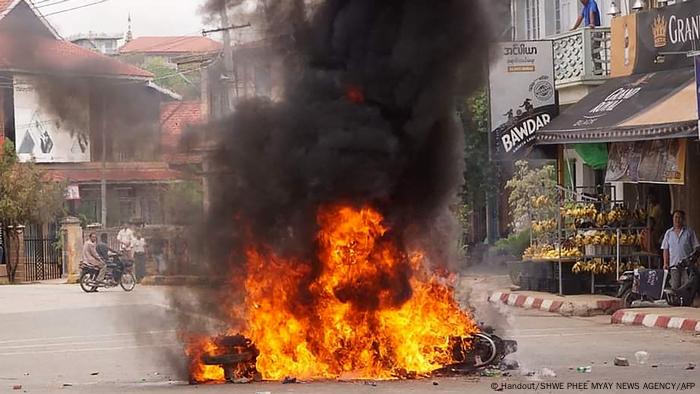Biden backs changes in military sexual assault prosecution
By AAMER MADHANI and LOLITA C. BALDOR

1 of 3
FILE - This March 27, 2008, file photo, shows the Pentagon in Washington. (AP Photo/Charles Dharapak, File)
WASHINGTON (AP) — President Joe Biden on Friday put his stamp of approval on a long-debated change to the military justice system that would remove decisions on prosecuting sexual assault cases from military commanders.
Biden, however, stopped short of backing a congressional effort to strip commanders of oversight of all major crimes.
The president formally approved more than two dozen recommendations made by an independent review commission on sexual assault in the military. The changes include shifting decisions on prosecuting sexual assault cases to special victims prosecutors outside the chain of command to remove any appearance of conflicts of interest.
The military’s sexual assault response coordinators and victims advocates also would be removed from the command structure system.
Reports of sexual assaults in the military have steadily gone up since 2006, according to Defense Department reports, including a 13% jump in 2018 and a 3% increase in 2019.
“I look forward to working with Congress to implement these necessary reforms and promote a work environment that is free from sexual assault and harassment for every one of our brave service members,” Biden said in a statement endorsing the recommendations.
Sen. Kirsten Gillibrand, D-N.Y., has the support of 66 senators for a bill that would have independent prosecutors handle all felony cases that call for more than a year in prison. But other key lawmakers and leaders of the military services have balked at including all major crimes. There are concerns that stripping control of all crimes from commanders could hurt military readiness, erode command authority and require far more time and resources.
Biden hailed Gillibrand’s work on the issue. But he asked the commission to focus only on addressing the problems of sexual assault and harassment in the military, said a senior administration official who was not authorized to comment publicly and spoke on the condition of anonymity.
Asked about the Gillibrand legislation, White House press secretary Jen Psaki said Biden “looks forward to working with Congress to implement these necessary reforms,” but she sidestepped whether he would be supportive of the proposed legislation.
Gillibrand in her own statement said the commission’s recommendations — and the administration’s embrace of them — would add momentum to efforts to reform the military justice system. Still, she urged a broader overhaul.
Last month, Defense Secretary Lloyd Austin, for the first time, voiced support for taking sexual assault and related crimes away from the chain of command and letting independent military lawyers handle them.
He issued a memo to Pentagon leadership Friday directing that they immediately move on the commission recommendation including adding sexual harassment as an offense under military law.
Austin’s support came even as military service secretaries and chiefs, in memos to Austin and letters to Capitol Hill, said they were wary about the sexual assault change, and laid out greater reservations on more broadly revamping the military justice system.
Gillibrand has argued against limiting the change to sexual assault, saying it would be discriminatory and set up what some call a “pink” court to deal with crimes usually involving female victims.
“I’m deeply concerned that if they limit it to just sexual assault, it will really harm female service members. It will further marginalize them, further undermine them, and they’ll be seen as getting special treatment,” she previously told the AP.
The Army’s handling of sexual assaults and other violence has come under significant scrutiny in the aftermath of a series of crimes, including murders and suicides last year at Fort Hood, Texas. A review panel found that military leaders at the post were not adequately dealing with high rates of sexual assault and harassment and were utterly neglecting the sexual assault prevention program.
“These special victims require and deserve all critical decisions about their case to be made by a highly trained special victim prosecutor who is independent from the chain of command,” the report says. “A commander’s position within the unit leads to an inherent appearance of a conflict of interest.”
Biden said during an International Women’s Day speech in March that there would be “an all-hands-on-deck effort under my administration to end the scourge of sexual assault in the military.” He underscored on Friday that reform was essential for the health of the military.
“This will be among the most significant reforms to our military undertaken in recent history, and I’m committed to delivering results,”″ Biden said.
The commission made 28 recommendations and 54 sub-recommendations in its report to Biden, including specific changes to improve accountability of leadership, climate and culture and victim care and support.
Rep. Adam Smith, D-Wash., chairman of the House Armed Services Committee, said Biden and Austin’s embrace of the commission’s recommendations demonstrated the administration is “treating this issue with the urgency it deserves.”
“As I have said, the scourge of sexual assault in our military must come to an end, and after years of trying and failing to address the problem the time has come to remove the prosecution of sexual assault crimes from the chain of command,” Smith said.


























